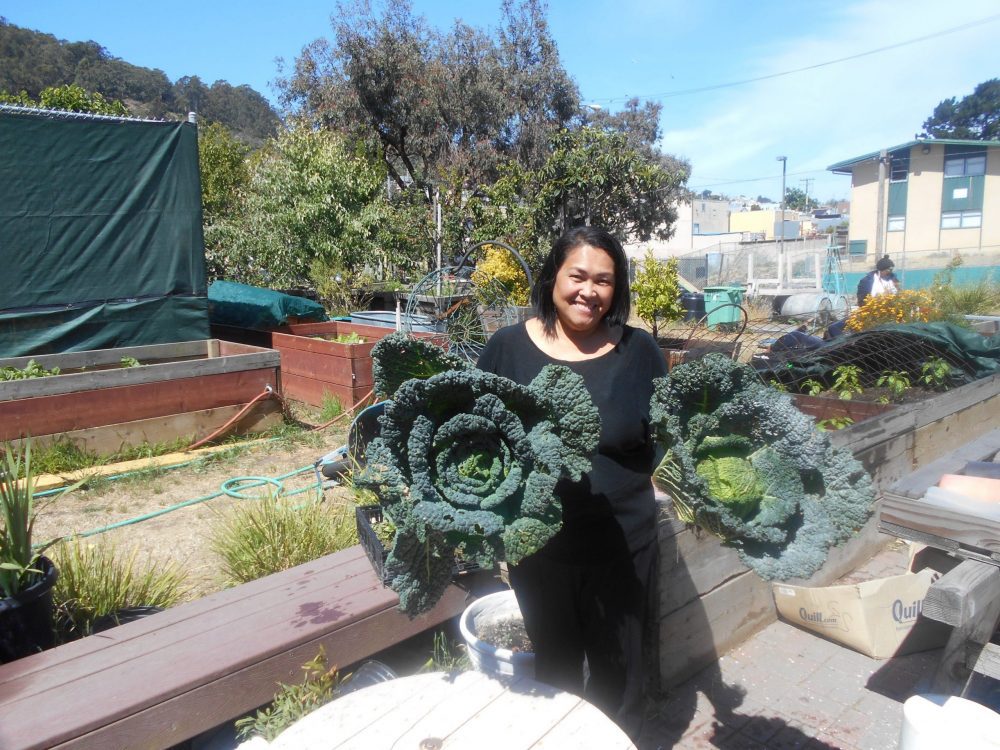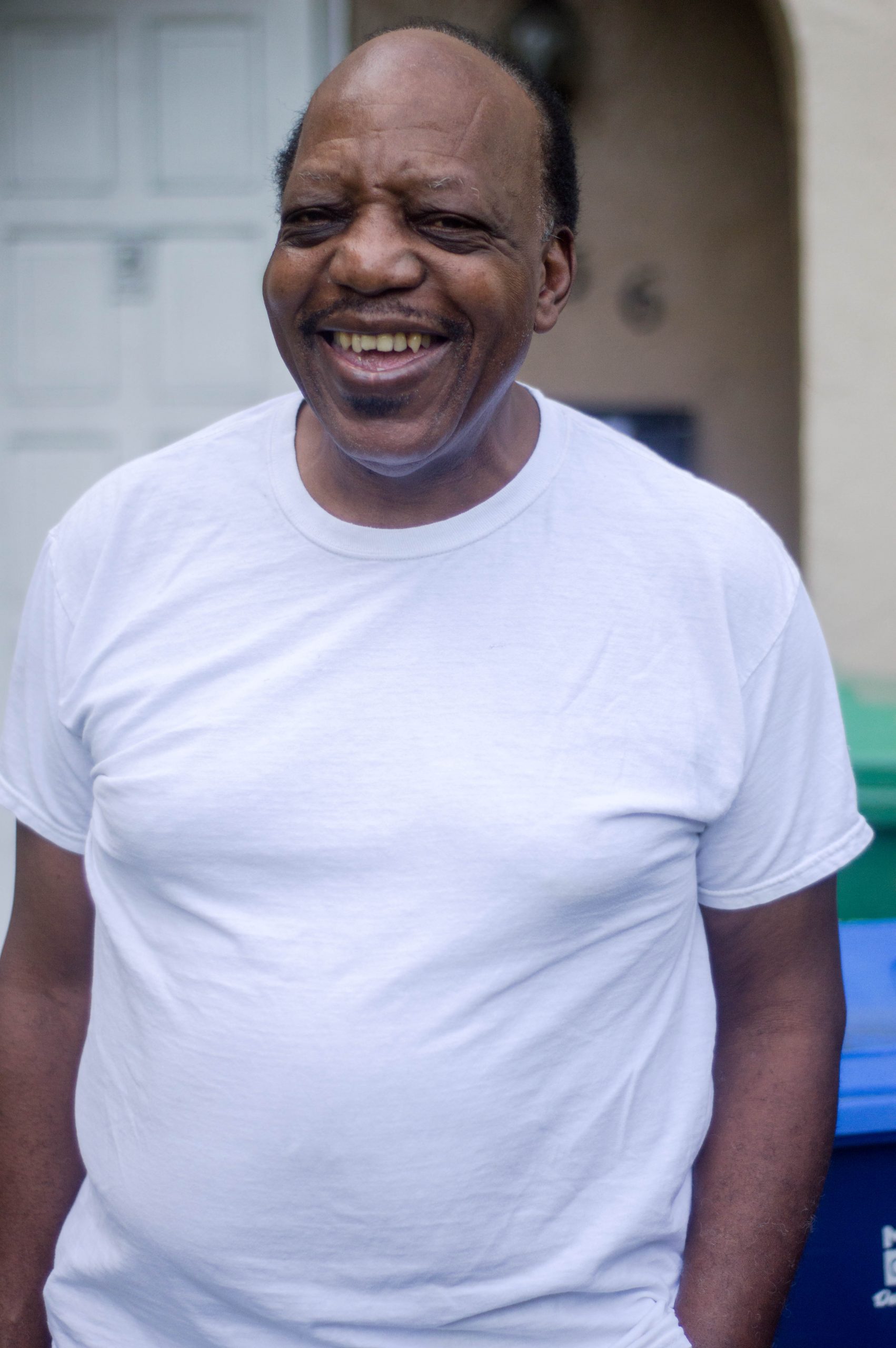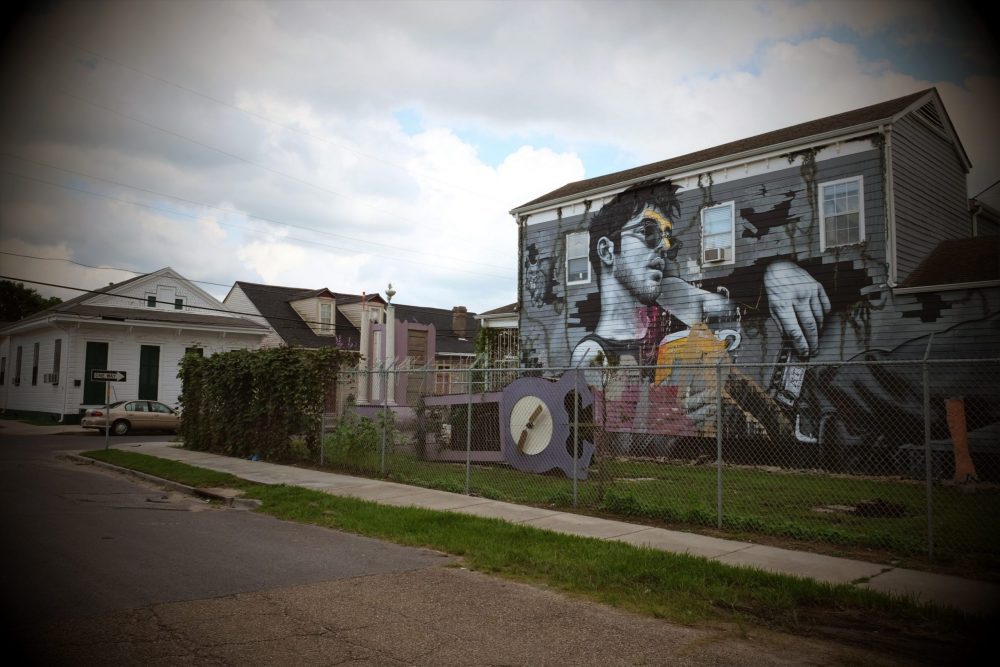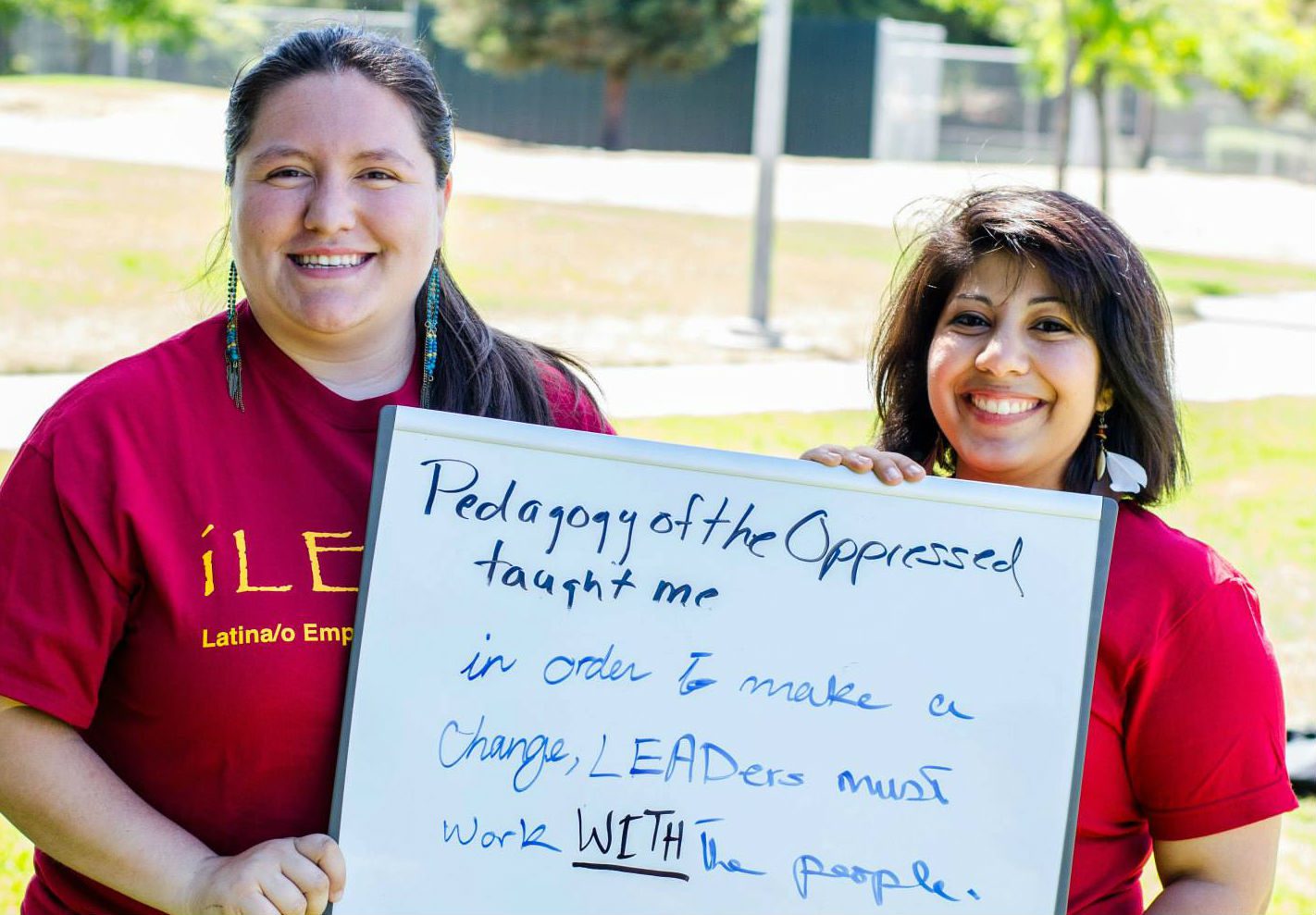
A peer health leader shows off the fresh vegetables she grew in her garden, which is attached to a HOPE SF community center. Photo courtesy of Sineva Malepai
In public housing communities across the United States, numerous efforts are being made to bring programs and services to residents. Many of these programs are well regarded by residents and have tremendous support. However, it is not uncommon that despite exhaustive efforts in outreach and various incentives provided by staff to gain participation, some programs have minimal or inconsistent resident engagement.
For six years, the Health Equity Institute at San Francisco State University has provided technical assistance and evaluation support to the City of San Francisco’s HOPE SF Initiative, a large-scale public housing revitalization project that includes significant investment in new housing and services. In supporting the HOPE SF Initiative, we interviewed staff who serve public housing residents from around the country and they reported what we find to be true in San Francisco: residents don’t engage with services for many reasons, and they can be practical or emotional.
Good Reasons to Stay Away
Many public housing residents feel that there is stigma associated with accessing certain services, such as mental health support and case management, and as a result they stay away. Services may also present logistical barriers, like inflexible hours or lack of childcare, which make programs inconvenient for residents to attend. The location of the services may also make them feel unsafe. Other significant barriers to engagement can be a perceived lack of cultural relevance or lack of cultural competence on the part of providers and other negative experiences with providers.
Distrust of programs and staff is another barrier that can exist between residents and public housing programs. Staff turnover and unsuccessful or terminated programs lead to inconsistent accessibility of services, which could cause residents to be skeptical of the long-term viability of public housing services due to a cycle of “start and stop” programming. Furthermore, when there are weak social connections and cultural divisions between residents who live in public housing, there are additional challenges for those who want to organize and change their communities.
However, in the HOPE SF public housing communities, residents have made it clear that they want services that promote their wellbeing and they desire opportunities to support and connect with their neighbors. They believe communities play a role in healing themselves. In San Francisco, decades of abandonment by the public systems and the programs meant to serve the community has led residents to believe that lasting change starts with them. They wholeheartedly subscribe to the mantra “nothing about us without us,” which gained common usage in the disability rights movement.
Peer-to-Peer Strategies
Peer-to-peer strategies attempt to bridge social divides while providing opportunities for residents to support their own community, engage in paid work, and focus on their own development. These strategies involve residents who may serve as any one or more of these things: a source of information, a bridge to services, an advocate for community needs, a facilitator of community action, and an organizer of community activities. Peers come from any age group and at their core, they reflect, represent, and serve their own community.
One of the most common places peer-to-peer strategies can be seen is in public health. There is a long tradition of residents playing a formal role in addressing individual and community health issues. Community health workers, promoters, outreach workers, peer navigators, and health coaches are common roles that community members have played as part of public health programs. Public housing is an environment well suited for a peer-to-peer approach, and such programs are being implemented in public housing communities across the country. Along with connecting residents to services and providing them with social support, peers can advocate for system changes and elevate resident voices and decision-making power.
HOPE SF Peer Health Leadership Program
In 2012 San Francisco State University’s Health Equity Institute and the Department of Health Education partnered with the City of San Francisco and the San Francisco Foundation to examine the opportunities and barriers to implementing peer-to-peer health strategies in the four public housing sites that make up the HOPE SF initiative. Students and faculty from the university’s public health master’s program conducted a research project to examine literature and gather input from residents and stakeholders to determine the desire for and viability of peer-to-peer health strategies in these communities. Building on that research, funds were allocated to pilot the HOPE SF Peer Health Leadership program. (The city has made a commitment to sustain the program once grant funds are exhausted in the fall of 2017.)
The program has aimed to address three central challenges to successful resident engagement within HOPE SF communities:
- the gap in trust between residents and programs/services
- the cultural divides in the community
- the barriers to employment
By the end of 2013, the HOPE SF Peer Health Leadership program was well established with 17 paid peer health leaders supporting health promotion activities in four neighborhoods. The peer health leaders were known members of the community and they reflected HOPE SF’s diverse populations. Numerous health education and promotion activities have been offered over the past four years, including health services outreach, meal and grocery delivery, food bank outreach and distribution; physical activity like Zumba and walking clubs; nutrition education and cooking demonstrations; health screenings; community-wide events; support groups; and family activities like dinner and game nights.
To fulfill their role as peer health leaders, and to promote personal and professional development, peers participated in numerous training sessions that focused on health topics such as diabetes, stress, smoking cessation, and pest control in homes, and general professional development skills like facilitation, public speaking, and conflict management. Furthermore, they received extensive and ongoing emotional and practical support from program staff.
In the last four years, the HOPE SF Peer Health Leadership program has evolved and many of the original health leaders moved on to other professional and personal opportunities in the fields of health and service connection/family support. In addition, the program has grown from a pilot supported with grant funds to a sustainable program overseen by the San Francisco Department of Public Health. It is implemented by a community-based organization, the Urban Services YMCA of San Francisco.
Connecting Residents to Services
HOPE SF peer health leaders are trusted links to programs that are viewed with wariness. In interviews and focus groups, peer health leaders report resident skepticism toward any service or educational programming brought to the community because past programs did not have lasting impact. Residents say that building rapport and trust with services takes time, and many services end before those relationships can form. “The hardest thing in this neighborhood is that there is such a high turnover of programs and such a lack of trust,” one resident said.
Peer leaders see themselves as a bridge to help overcome mistrust and to engage residents in the program’s health activities. Leaders who are bilingual act as links to residents who typically have language and cultural barriers in accessing programs.
HOPE SF residents say that staff members who are more relatable or familiar with the issues in their communities make services more welcoming and trustworthy. Seventy-three percent of program participants surveyed found it important that leaders are from their community, while 84 percent said they would be more likely to attend a health event if they were invited by a peer leader. One peer leader said, “It makes it a whole lot better, instead of a group of people coming in from out of the community trying to say that they want to do things for the community, but we don’t know who they are . . . having residents be a part of the peer leadership team is an awesome thing.”
Cultural Divides
Peer health leaders discuss difficult and entrenched patterns of disengagement, segregation, and mistrust among HOPE SF residents who are of different age and ethnic groups. These interpersonal dynamics and the fractured social fabric pose a great challenge to community-building work. The demographics of families who live in public housing in San Francisco are rapidly changing due to a dwindling African-American population, which contributes to feelings of loss and threat among those who have been living in these neighborhoods for generations. HOPE SF staff have witnessed fighting between different ethnic groups, and a growing number of monolingual Samoan and Chinese residents say they feel isolated from their neighbors and the programs offered in their communities. Exacerbating this situation are few opportunities for adolescent youth and seniors to participate in activities as many programs are targeted toward elementary-aged children and adults.
As a result of these strongly held divides, peer health leaders who reflect various ethnic and age groups have been hired to create cross-cultural connections for residents. These diverse teams of resident leaders have challenged their own preconceptions and have built new relationships in the community, showing residents how to cross cultural boundaries. In one HOPE SF site, a monolingual Chinese peer health leader reported that Chinese residents in his community are less fearful now of their neighbors from different ethnic groups, and have become more integrated in the community.
“It used to be everyone secluded to their own little area, or certain groups who were friends or neighbors may just function within themselves. But since the peer leader has been here and we’ve been doing these events that are interactive with the whole community, we get a lot of residential response,” says one peer health leader.
Recently, leaders have begun to facilitate cultural exchange potlucks in which residents from different communities on site come together with homemade meals and share them with one another. Peer health leaders hope that meeting in safe, facilitated spaces will promote trust among residents who previously had little interaction.
A Bridge to Employment
Job attainment is a key priority for HOPE SF residents and the peer health leadership program is viewed as an opportunity to further professional development and provide work opportunities to community members. Access to regular, paid work either through employment in the program or as a step after is viewed as a meaningful and critical aspect of this strategy.
Across the peer health leadership program, hiring criteria resulted in the recruitment of many skilled and experienced leaders. Each of the program sites developed its own hiring process. Some residents were identified and recruited to become leaders because of their established leadership role in the community. Some sites distributed a general advertisement to the community. Though previous work experience and educational background was not required, each applicant went through an interview process to see if the position was a good fit for them and if they felt passionate about health and leadership. Many, though not all, of the individuals hired as peer health leaders brought rich community organizing knowledge to their roles. Several had experience running community programs, such as food banks or recreational committees. Others assumed responsibility for providing shelter, food, and parenting to residents. Many had been employed by or been participants in other community leadership efforts over the years.
HOPE SF peer health headers have benefited from this professional experience, developed new skills and in many cases, improved their own physical and mental health as well. They’ve had opportunities to travel and network in a professional capacity and have also advanced their public speaking, computer, job searching, and interview skills. They report feeling increased confidence in going out into their communities to do outreach with residents around peer-led programming. One leader was so motivated that they obtained their driver’s license, got a better paying job, and moved out of public housing. Another leader lost over 60 pounds in the last year and a half and started their own health and wellness business.
Since the start of the program four years ago, numerous peer health leaders have continued their education or have moved on to full-time employment. Nine peer health leaders have attained a Community Health Worker Certificate (CHW) through the City College of San Francisco, independent of program activities but with financial support. The CHW program has taught them about health disparities and social determinants of health and they say they feel more empowered and united with other communities. This certificate has now opened doors for careers in health. One peer leader is transitioning from her current position to become a full-time community health worker with the Department of Public Health at the wellness center in her community. The peer health leaders who have been in their roles for several years are highly skilled, competent community health workers and some have expressed an interest in moving on to pursue jobs in health and social services. Program staff work with them to find full-time employment when they are ready, and several peer health leaders have moved on to work with agencies such as the YMCA as resident service connectors. Peer health leaders have also been hired by onsite developers as resident services coordinators, community liaisons, and construction workers.
Challenges
Peer-to-peer health strategies in public housing are a key mechanism to promote meaningful community changes and resident wellbeing. However, it is important to recognize that peer-to-peer programs are not without challenges, including issues of sustainability, scalability, and the effort required for implementation. Simply hiring residents from the community does not erase the barriers to engagement. Sustainability, consistency, and accessibility of programming; ensuring that peers reflect community demographics and experiences; and creating program activities that reflect community input are required.
Peers need extensive training and ongoing support to develop skills in outreach, health education, and program implementation. Furthermore, peers need substantial emotional support to play a role that is demanding and can have porous boundaries. Residents who serve as peer health leaders experience the same daily trauma their neighbors do. While many have developed coping mechanisms for this trauma, the responsibility they feel to heal and support their community, combined with daily life stressors, can weigh heavily on them and cause burnout. There is a clear need for intensive, individual mental health support for peers. HOPE SF peer health leaders desire consistent therapy, both in a group as well as individually, to adequately support their own healing and personal growth processes.
Even though there are challenges, peer-to-peer programs open opportunities for connection between services and public housing residents. They can support the rebuilding of social fabrics in public housing communities by bringing together residents of different backgrounds and cultures, and making space for them to feel positive connections. These programs can activate community leadership and advocacy efforts while also improving community health, and they provide the opportunity for existing or budding leaders in the community to do meaningful paid work in service to their own community. As one HOPE SF leader shared, “We’re making things good. I want to be a part of that, not just to say I’m getting paid. No, to say that this is my community and I take ownership of it.”





This program taught me so much not only to build a good relationship with people of colour in my community but anywhere in the city. I started off working for the WEALTH program at Urban Strategies (with every heart beat is life) since 2013 and after that working as a Peer Leader for the YMCA URBAN SERVICE. This gives me an opportunity to grow and grow, I met so many beautiful people and work with more beautiful people around the community and I still meet a lot of beautiful incredible people around the community. Working through health environment is such a blessing for me, I got to help people and show them the way to do things if they needed help. I did not know these things until I came along to do this job, thanks Urban Strategies for the experience I have so I could move forward and better myself.